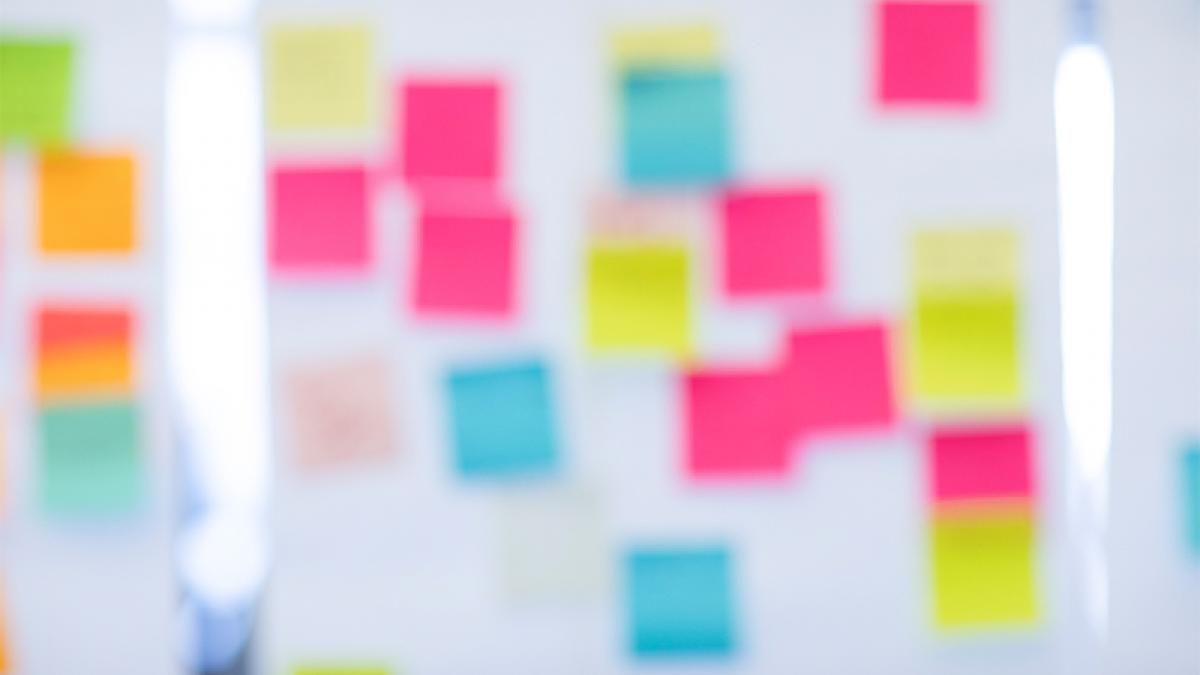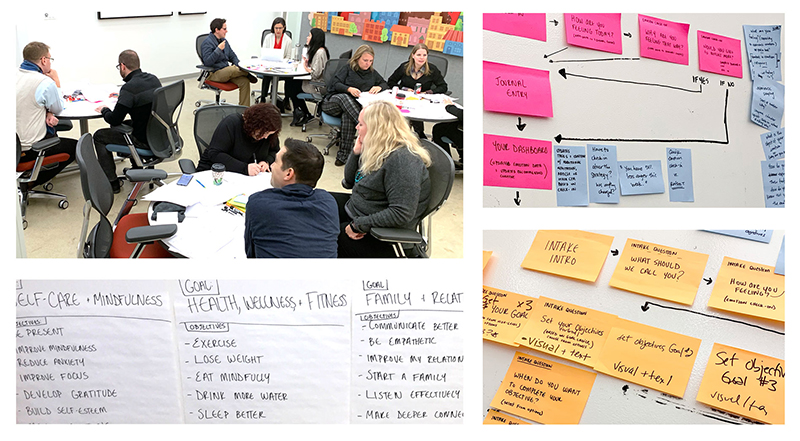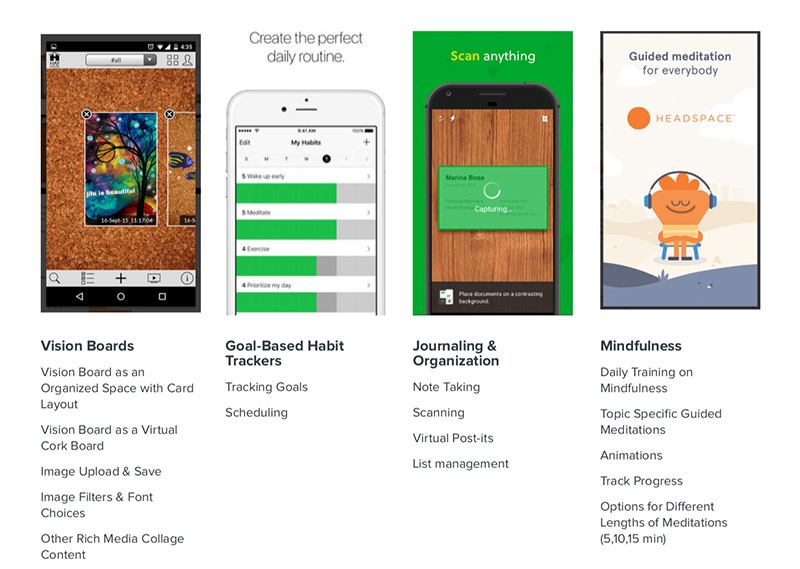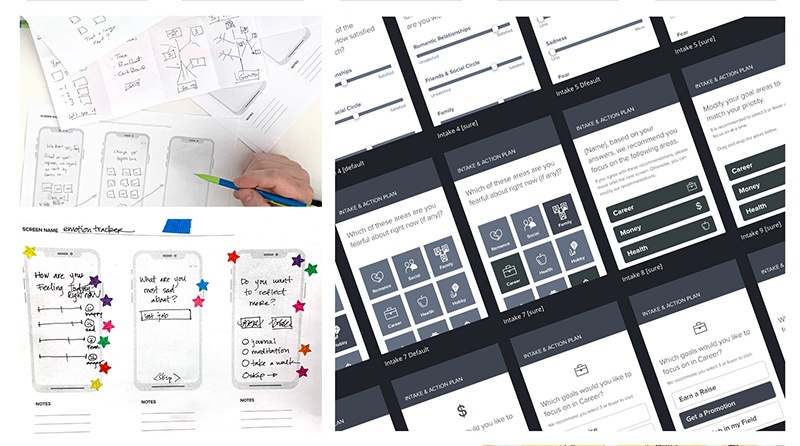Design Strategy Workshop: Crafting a Vision for Creative Excellence
The best way to learn "design thinking" is to do "design thinking."

“Design thinking” has become a predominant buzzword in the evolution of software and product design. One reason for this can be attributed to product companies realizing the importance of design as a business strategy instead of as a service line. It also helps that people like the folks at GoogleVentures and the Stanford Business School have written about the practice of design sprints to solve complex business problems. These organizations really know what they’re talking about when it comes to innovation in the design and user experience field.
However, one thing that is important to understand is that design thinking is a re-emergence, not a new concept. “Design thinking” is simply design itself, and design has been practiced for centuries. What makes this re-emergence unique is that we’ve expanded who participates in the initial conception phase, and we’re seeing greater success when design experts are joined by team members who are experts from different disciplines of a business. Everyone shares the same goal of creating an experience that people will use.
Essentially, a design workshop is when the team comes together to do “design thinking.” After practicing these methods for a few years, it has become clear to me that the problem space can be any size and the conceptual framework behind the process is useful for producing valuable work on any scale.
What is a design workshop?
According to Nielsen Norman, a design workshop, sprint, or studio is:
“a type of UX workshop that combines divergent and convergent thinking: it allows UX professionals to explore a wide set of ideas and also create a shared vision to move forward within a short amount of time. It incorporates brainstorming, critique, and prioritization into one condensed session.”
No matter how you define it, or what problem you need to solve, the concept of a design workshop is the same and the amount of time needed to complete the goals of the workshop is entirely dependant on how long the team needs to reach the desired outcomes.

For example, you might need to workshop the user flows of a certain piece of functionality such as event registration to identify all of the touchpoints, or perhaps it is something much larger like key features of a new mobile application. The needs in these two examples vary in complexity, and the length of the workshop should shift accordingly. The point is to generate as many ideas as possible, decide on the direction, and then commit to making something that can be tested with a small audience.

Planning the Workshop
In order for a design workshop to be valuable, it is important to begin with the end in mind. You must think critically about what output the team needs to take actionable steps with the project post-workshop. Working backward from the outcome informs what topics require group brainstorm or group sketch and which decision-makers should attend and participate. Preparations should be made ahead of time so that each participant comes with ready ideas, an open mind, and all of the context they need to contribute to the workshop.
Additional required inputs for the workshop include:
- A defined business opportunity
- Key Performance Indicators (KPIs)
- Audience definition
- An engaged team
- Any existing prior research
- Buy-in from key stakeholders
- Real content
A Defined Business Opportunity
It is essential to know what problem needs to be solved. This is why you are completing the work in the first place! Whatever the underlying business need be, each design decision that is made during this process should be in service to achieving your organization’s business goals.
Key Performance Indicators (KPIs)
KPIs are where the rubber meets the road as business and audience goals intersect. Here is where we determine the metrics to measure overall success of the thing you are building. Often times, mapping out where business goals and audience goals overlap is a workshop in and of itself.
Audience Definition
In order to successfully design something, it is pretty crucial to know who you are designing for and why. However, it is not enough to simply know who they are, but to really understand the context in which users interact with a product or feature.
An Engaged Team
Utilizing team members from varying areas of the product team (including decision-makers) makes for a well-rounded design thinking workshop. Everyone is a user of various products and has a point of view on design and interaction, even if they are not trained designers.
Engineers, Product Managers and Business Analysts are excellent candidates for these sessions in addition to the User Experience team. Design thinking and group brainstorms tend to be fruitful with ideas, some of which end up being way more interesting and complex than others. Keeping an agile mindset enables the group to be nimble and adjust to ideas that arise during the workshop. Being Agile in this respect allows to switch the focus of the workshop and activities to what perhaps may have been an undisclosed priority.

Research (Existing Knowledge, Competitive Evaluations, Heuristics, etc.)
The amount of research completed prior to a design workshop highly depends on the expected or desired outcomes of the session. The point of the workshop is to generate ideas and agree on a direction, so starting with a competitive analysis or market scan to see how others in the wild execute similar functionality is a great place to start for ideation.
Additionally, thinking outside of your market segment has other benefits. For example, ZocDoc created an experience for finding and booking appointments for nearby healthcare providers that is not all that different from booking an Airbnb. The similarity in the UX is that both users need to self identify with some piece of information, insurance benefits or city destination, and the rest relies on the filtering. By expanding your research to different market segments, you might discover a piece of functionality that could be adapted easily to the product.
Buy-in From All Parties
Engagement from all team members is the single most important piece of what facilitates a successful design thinking workshop. The best products are designed when everyone is in it together from the beginning, collaborating with creative ideation to understand the constraints and how it affects their individual pieces of the puzzle.
Design workshops can be an expensive investment, and for those stakeholders who have yet to understand the value, you might need to do some extra convincing before they buy into the process. The investment is not only about dollars spent, but also about time contributed. A few hours, days, or even a week of time spent by stakeholders up-front in this stage of the design process creates weeks, if not months of valuable design and build efforts.
Real Content, Please
Designing for dynamic content is not always easy. Having real content to work with enables the group to focus on the interactions, interface, and context of “doing the thing”, and less about creating the content in real-time. Sometimes the workshops are filled with blue-sky and big thinking, and sometimes they need to be centered around gaining internal alignment for how a user gets from point A to point B in the conversion funnel. This is always where the team sees the need to develop the content strategy, if there is not one already in place.

Facilitating the Workshop
Where to start can feel daunting, but there is no reason to fret, because there are thousands of online resources available for ideation and brainstorming exercises that facilitate design thinking.
The book “Sprint” by Google Ventures is a great resource and proven methodology for solving problems through designing, prototyping, and testing ideas with users. They have essentially put together a “greatest hits” of methods and exercises that help teams practice design thinking. It is packaged up into a 5 day workshop that gives your team something tangible to test and learn from. Many others have since written about this type of workshop, but the creation of “Sprint” was the first time it had been summarized into something actionable that any team can achieve. The Design Kit from IDEO is another amazing resource for various methods.
You do want to be mindful and inclusive of those who might have fears about a “sketch” session if they do not consider themselves to be designers. A great icebreaker for this kind of group that will help set proper expectations for the kind of quick sketches the workshop requires is “Draw a House.” Each participant is asked to draw a house with at least three features (Roof, Door, etc).
Essentially, this exercise shows that everyone in the group knows how to use an image to communicate that the house in fact has a roof, a door, a window etc. Most times, this type of sketch is just enough to move forward.
Keeping the brainstorming exercises short will get the most ideas generated and teach everyone to think quickly about a lot of ideas before diving into the details of one in particular. It is very important that someone be assigned to time-keeping to keep the workshop on track and allow for group voting on ideas with your main stakeholder as the “Decider” for the next set of priorities. Committing to a solution can be difficult, especially if there is more than one great idea, but by picking one and testing it against theory quickly, it can easily be ruled out or expanded.
Actionable Outcomes
Using the Design Workshop approach to critically solve big problems brings value to organizations on a number of levels. First, it gives the team a shared vision or north star to the project. There is no back and forth on the goals as everyone is aligned and understands what is being built, and also why and how you intend to test in order to gain valuable insights from real users.
Second, design workshops uncover risks that can occur later in the build or when the feature is ready for deployment that could be detrimental to a product roadmap. Identifying these risks ahead of time gives the team time to mitigate them.
And finally, the results from testing key product decisions with a small audience determines the roadmap for the feature or informed actionable next steps for the team to take whatever they have designed to the next level.
